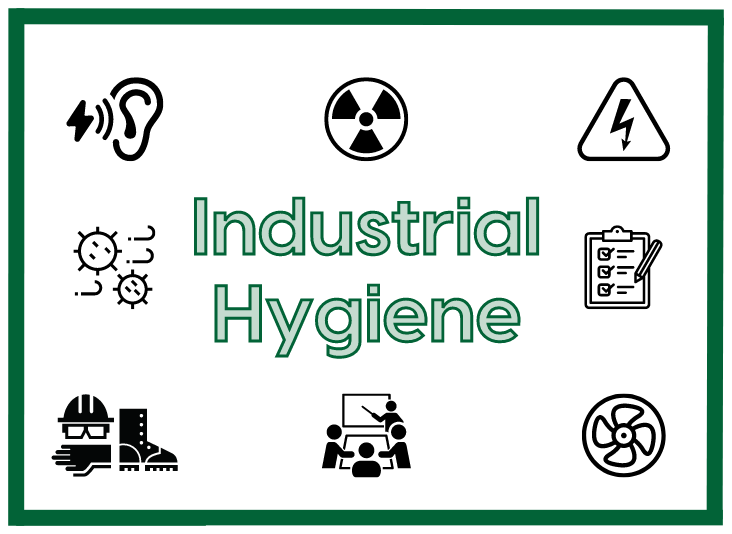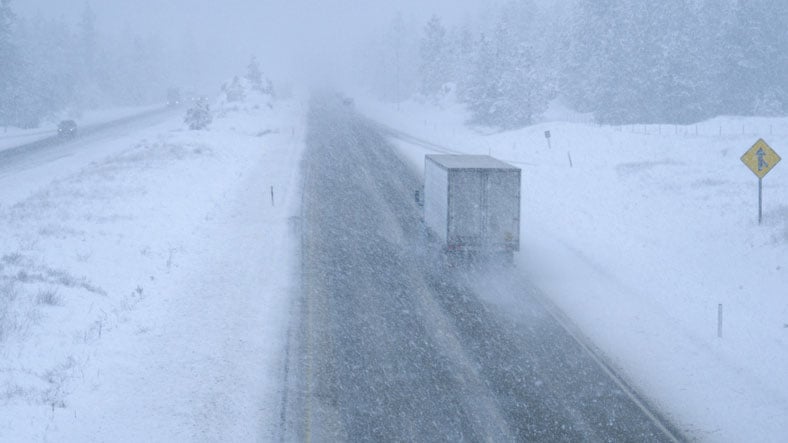Nice-to-Have or Required: How Important Is Industrial Hygiene?
You may be wondering: “What is industrial hygiene?” Most people know the term “industrial hygiene,” but few know what it means—or how important it truly is. The truth is, industrial hygiene is a crucial element of environmental, health, and safety (EHS) programs at any facility. Those who don’t prioritize it are exposing themselves, their workers, and their organizations to health and safety risk.
Industrial Hygiene Defined
The Occupational Health and Safety Administration (OSHA) defines industrial hygiene as “the science and art devoted to the anticipation, recognition, evaluation, and control of those environmental factors or stresses arising in or from the workplace, which may cause sickness, impaired health and well-being, or significant discomfort among workers or among the citizens of the community.”
These “environmental factors” often involve chemical air contaminants, but this classification also includes, among others:
- Noise
- Vibration
- Radiation
- Biological materials
- Heat and cold stress
- Hazardous material exposure
Simply put, this means that industrial hygiene requires full manipulation of operational risk such that the employees and the community at large stay safe.
Unidentified Hazards Threaten Workplace Safety
But industrial hygiene is not just pointing out that safety programs are in place. It is anticipation, recognition, evaluation, control, and confirmation of protection from the risks associated with exposure to workplace hazards that may not yet be identified.
A full industrial hygiene program is both essential and complex. It requires vigilance and diligence to know where workplace risks exist—and how to mitigate them. This requires accurate risk determination. To that end, technical industrial hygiene monitoring is often necessary—to determine exposure risk and help managers decide how best to protect employees with appropriate program design, management, and more.
These industrial hygiene assessments reveal not only the obvious hazards—but also the ones managers and staff may not even know exist. These are risks that may not be apparent during day-to-day operations, and may only become an obvious threat over time—and potentially cause injury or incident—before they are even recognized as dangers.
It’s an organization’s responsibility to ensure that employees, over the course of their careers, are never exposed to preventable risks.
These mitigation methods could include, but are not limited to:
- Hazardous airborne chemicals exposure monitoring
- Personal protective equipment (PPE) assessments, respiratory gear selection, and fit testing
- Task- and job-based risk assessments
- Noise exposure dosimetry and sound-level mapping
- Site-specific exposure mitigation
- Ventilation assessments
- Health and safety program design, implementation, and performance measurement
- Radiation, electrical, biological, and hazardous material safety planning
- Chemical hygiene and hazard communications
- Indoor air quality assessments
- Unique, complex, or high-hazard operations preparations
- Proper and thorough training
Industrial Hygiene Regulatory Requirement
It often feels like industrial hygiene is a luxury, a check the box, or just a nice-to-have. Not so. In fact, it is federally mandated. While OSHA does not strictly outline an “Industrial Hygiene” regulatory requirement, many of the administration’s safety standards support industrial hygiene best practices.
Noise, heat stress, and radiation are all similar in what they require for monitoring and protection. While they are not strictly regulated, they are often evaluated under OSHA’s 29 CFR 1910.132 (“General Requirements”) safety standard. This standard is commonly used to enforce industrial hygiene requirements, and outlines the need for:
- Hazard assessments
- Identification of risk exposure potential
- Understanding of subsequent potential risk severity
- Relevant and appropriate PPE if a hazard is found
All these processes conform to industrial hygiene practices.
Chemical Exposure Heavily Scrutinized
Harmful chemical exposure is one of the most heavily prioritized safety threats within industrial hygiene programs. In labs across industries, millions of chemicals are used for various reasons. OSHA sets regulatory exposure limits for about 600 of these—employees must never be exposed to concentrations above these set levels.
There are also 1,500 chemicals with associated best practice exposure limits established by the American Conference of Governmental Industrial Hygienists (ACGIH) and the National Institute for Occupational Safety and Health (NIOSH). These chemicals all have regulatory exposure limits, but there are relatively few chemicals that have their own specific standards. There is no single clear-cut standard dictating industrial hygiene monitoring for all OSHA-listed chemicals. Often, chemical industrial hygiene requirements will fall under 29 CFR 1910.132—specifically as it relates to determining appropriate PPE for respiratory and splash protection.
Which Industries Need Industrial Hygiene?
Every industry can benefit from industrial hygiene risk assessments and programs—the details of which will vary from facility to facility, organization to organization, and industry to industry. Industrial hygiene is applicable to a long list of commercial niches, industries, and organizations, each with their own concerns and considerations, for example:
- Healthcare: Operating rooms (ORs), labs, and morgues
- Life sciences: Laboratories of all sizes and functions, with different materials, experiments, and operations
- Food, drug, flavors, and fragrance manufacturing: Especially when it comes to the large chemical inventories these organization often store and employ
- Pharma: To mitigate the hazards from the many active ingredients
- Heavy industry: Frequent loud noise concerns as well as the presence of silica, coal, and lead
- Aerospace: Manufacturing and R&D of complex equipment
Overall, at some point, every organization must consider their industrial hygiene practices to protect their employees and maintain operational compliance.
Lack of Industrial Hygiene = Lack of Safety
Industrial hygiene touches almost every element of operations in industries and organizations of all types. It is federally required to at least some extent and is truly crucial for safety in any workplace. Viewing industrial hygiene as a nice-to-have will result in project reactivity—instead of proactivity. While reactivity will mean damage control is performed when it is already too late, proactivity will have you prepared for any unexpected outcome—and will keep your employees safe.
Unsure how to start your industrial hygiene journey? Contact Triumvirate Environmental today. Our dedicated team can help ensure full compliance—and maximized operational safety—on your path forward.







